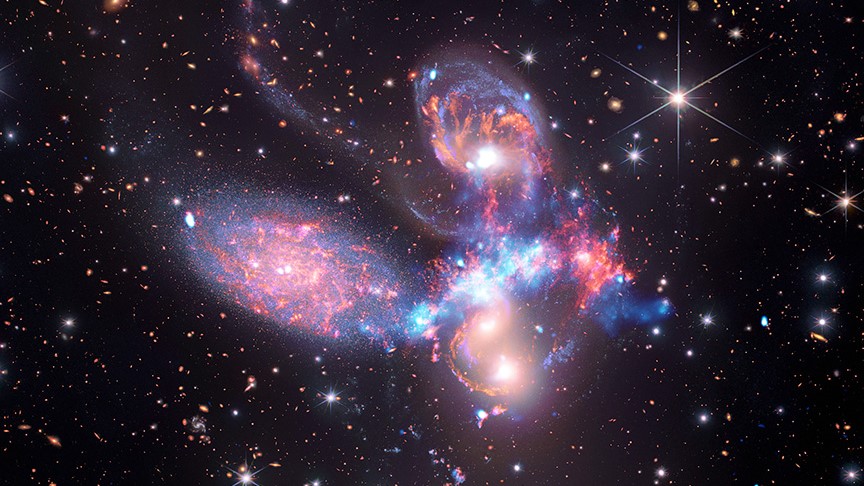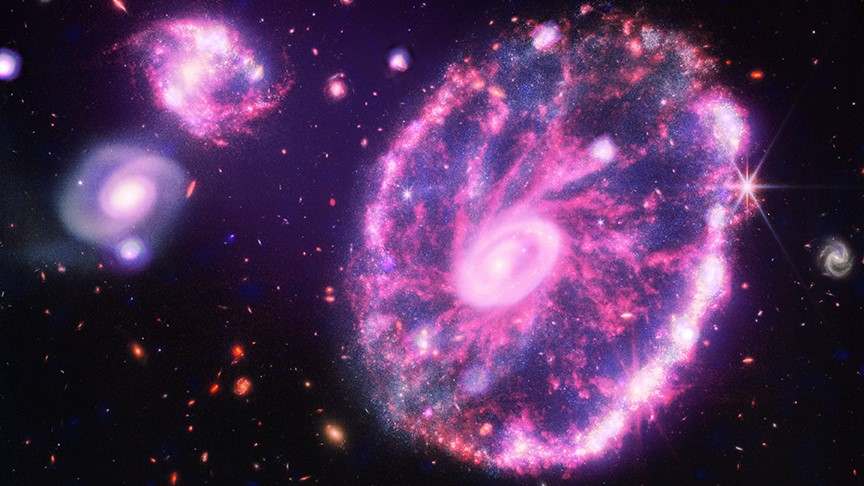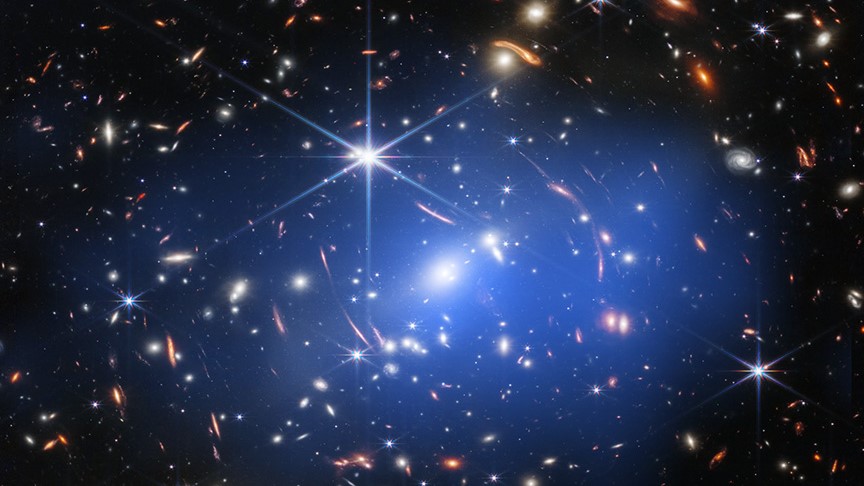Iconic James Webb Space Telescope images get X-ray vision boost
Four of the first science-quality images from NASA's newest observatory have received a boost from X-ray vision.
The James Webb Space Telescope (JWST) images revealed this summer instantly became iconic, but a new team-up with NASA's Chandra X-ray Observatory shows that despite being the most powerful space telescope yet built, JWST isn't going to examine the universe in isolation. In fact, it may be at its most effective when paired with other instruments.
JWST is designed to see the cosmos in infrared, so its work is particularly enhanced when combined with instruments that observe space in different wavelengths of light, such as Chandra with its X-ray vision. The first images to be given an upgrade with Chandra X-ray data reveal new features that weren't visible to JWST alone, according to a NASA statement.
Gallery: James Webb Space Telescope's 1st photos
Consider the image of Stephan's Quintet, in which four galaxies are locked in a complex gravitational dance while a fifth galaxy is a distant observer of this cosmic choreography.
The JWST image of these galaxies showed features that astronomers had never seen before, particularly results of their interactions like tails of gas and bursts of intense star formation. When combined with data from Chandra and NASA's retired Spitzer Space Telescope, the observations of Stephan's Quintet revealed a hitherto unseen shock wave heating gas to tens of millions of degrees on any scale. This shock wave is created by one of the galaxies weaving through the others at around 2 million mph (3 million kph).
Cosmic collisions are also key to another object JWST imaged, the distant Cartwheel galaxy. This galaxy got its unique shape when it collided with a smaller galaxy 100 million years ago. As the smaller galaxy ripped through the heart of the Cartwheel galaxy, it also kick-started a bout of intense star formation. Chandra data reveals X-rays in the Cartwheel galaxy emitted from superheated gas and individual exploded stars, as well as from neutron stars and black holes that are greedily feeding on material ripped from companion stars.
Breaking space news, the latest updates on rocket launches, skywatching events and more!
Perhaps the most sparkling of JWST's first images was of a galaxy cluster called SMACS J0723, which is located 4.2 billion light-years away from Earth. Chandra's addition to these observations reveals gas heated to tens of millions of degrees on any scale.
Clusters like SMACS J0723 are host to thousands of galaxies and also vast reservoirs of superheated gas. Scientists estimate that the gas revealed by the JWST and Chandra partnership possesses a total mass of around 100 trillion times that of the sun. That's several times more than the mass of every star in every galaxy in the cluster.
(That said, there's still more to be seen. Dark matter accounts for more mass in this cluster than gas does, but this mysterious component doesn't interact with light so is not visible even to the combined power of the JWST and Chandra.)
The quartet of new images is rounded out with the Cosmic Cliffs of the Carina Nebula at the edge of the star-forming region of NGC 3324, arguably the most stunning image in the first set of images from JWST.
The Chandra image of these cliffs, which are located around 7,600 light-years from Earth, reveals more than a dozen X-ray sources, the majority of which are stars located in the outer region of a star cluster in the Carina Nebula. These stars are between 1 million and 2 million years old, making them very young in cosmic terms. Young stars like this are brighter in X-ray emissions than their older counterparts. Chandra's data is particularly helpful here to identify young stars in the Carina Nebula and distinguish them from older Milky Way stars that might be lurking in JWST's line of sight.
Also on display in the top half of the Chandra-enhanced image of the Carina Nebula is a diffuse X-ray emission that likely comes from hot gas from the most massive and hottest stars in the region, which are just outside the image's field of view.
Over its operating lifetime, which was planned to last five years but may stretch to more like 20, JWST will be collaborating with other space-based instruments like Chandra, as well as with telescopes based here on Earth. The new images show how important these collaborations will be to astronomy in the years to come.
Follow us on Twitter @Spacedotcom and on Facebook.

Robert Lea is a science journalist in the U.K. whose articles have been published in Physics World, New Scientist, Astronomy Magazine, All About Space, Newsweek and ZME Science. He also writes about science communication for Elsevier and the European Journal of Physics. Rob holds a bachelor of science degree in physics and astronomy from the U.K.’s Open University. Follow him on Twitter @sciencef1rst.




